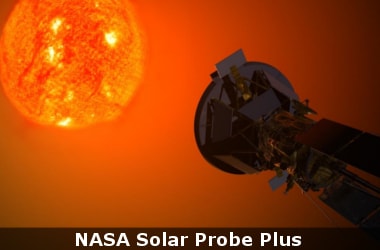
NASA aims to send its first robotic spacecraft to the Sun in 2018 and is slated to get within 6 million kms of the blazing star to probe the atmosphere.
Humans have sent spacecrafts to Mars, moon and interstellar space. NASA will now launch Solar Probe Plus mission to the Sun.
The sun is about 149 million km from earth.
Mission will unveil why the surface of the Sun called the photosphere is not as hot as the atmosphere called the corona.
NASA has indicated that the sizzling temperature of the Sun's atmosphere above is a sizzling 2 million degrees Celsius.
The surface temperature of the Sun is only around 5,500 degree celsius.
As you move away from the centre to the atmosphere, it is hotter which is one of the puzzles of the sun.
Scientists also want to know how solar winds get speed. The Sun blows a stream of charged particles in all directions at a million miles an hour. But scientists do not understand how that gets accelerated.
The mission may also ascertain why the Sun occasionally emits high-energy particles that are a danger to unprotected astronauts and spacecraft.
NASA has designed an 11.4 centimetres carbon-composite shield, which is designed to withstand temperatures outside the spacecraft of 1,370 degrees Celsius.
The unmanned probe will have special heat tubes called thermal radiators that will radiate heat that permeates the heat shield to open space, so it does not go to the instruments, which are sensitive to heat.
Sun: Know More- Distance to Earth: 149.6 million km
- Surface temperature: 5,778 K
- Radius: 695,700 km
- Mass: 1.989 × 10^30 kg
- Orbits: Galactic Centre
- Spectral type: G2V